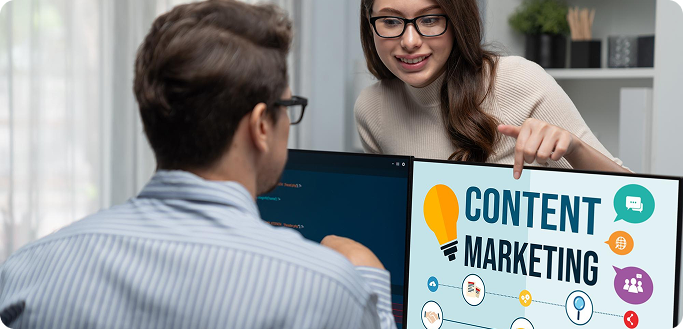Web design trends for 2025

In today’s evolving digital era, it goes beyond simply designing visually attractive pages. It’s all about weaving experiences that truly connect, captivate, and spark inspiration. As new technologies continue to unfold and a heightened focus on how users interact, the trends of 2025 are poised to reshape our perceptions of digital designs and functionality.
Check out our list of the most promising web design trends that we’re closely monitoring as we move into 2025.
User Experience
User Experience (UX) has become a central focus in web design, and this emphasis is expected to intensify in the coming year. Designers are actively working to craft immersive experiences for users, recognizing the pivotal role UX plays in achieving goals like lead generation, increased traffic, and higher conversions. The approach involves a meticulous consideration of various elements in user-centered design.
Every aspect, from the navigation bar and hero image to animations, videos, and text, is strategically structured to engage visitors right from the initial moments. The objective is to ensure that each interaction on the website is tailored to prioritize the user experience.
Fast website speed
The vast digital platform places emphasis on the fast loading of websites, reflecting the growing demand from users for seamless online experiences. Consequently, optimizing the loading speed of your web pages has become a critical consideration. This involves a focused effort on image optimization, content caching, and judicious selection of pre-built elements such as plugins, widgets, modules, and add-ons.
As we delve into 2025, the significance of quick and responsive website loading cannot be overstated. A website’s loading speed is not merely a technical detail; it is a pivotal factor that can significantly impact user satisfaction and engagement. Prioritizing fast loading times contributes to a positive user experience and positions your website competitively in the dynamic online landscape.
Storytelling
In 2025, designers face the exciting challenge of integrating storytelling into web design to captivate audiences. While storytelling is already a prevalent trend, its evolution lies in incorporating interactivity to establish a unique brand identity and voice within a fiercely competitive landscape. The key lies in innovation, where the addition of interactive elements can significantly impact the audience, encouraging prolonged engagement on the page.
Notably, interactive storytelling need not be extravagant; even simple animations with a few visuals or dynamic text can effectively enhance user engagement, making this trend particularly valuable for e-commerce websites.
This rising trend not only highlights the importance of storytelling but also underscores the significance of weaving interactive elements into the narrative fabric of web design. It’s a dynamic approach that invites designers to think beyond conventional boundaries and explore creative avenues to enhance user experiences.
Motion Effects on the Home Page
One emerging web design trend gaining significant traction is incorporating motion effects on the home page. This trend, already causing ripples in the industry, holds particular appeal for designers as it enables the creation of immersive experiences for website visitors. Anticipated to be among the top trends in 2025, we can expect an increased prevalence of motion effects, enhancing user engagement and visual appeal.
The versatility of motion effects on the home page is noteworthy, with options such as scroll-driven animations, hover animation, loading animation, accent animation, and moving elements. This trend holds particular promise for websites offering design services and SaaS products, as the strategic use of animations on the home page adds to the platforms’ aesthetic appeal and makes them more interactive for visitors.
AI in Web Designing
AI in web design witnessed a significant surge in 2023, and the trend is set to continue into 2024 and 2025, with more agencies incorporating AI tools into their website projects. The versatility of AI in the digital space is vast, but it is crucial to use it judiciously and constructively. While AI offers immense utility, it is not devoid of limitations, emphasizing the importance of understanding when and how to leverage its capabilities.
AI-driven image generators can adapt to various briefs, encompassing selected styles, word prompts, and examples. Additionally, AI proves valuable in the realm of content and website planning, ensuring coverage of essential themes and messages. However, caution is advised in relying too heavily on AI, as it operates based on the information provided. For instance, while AI can suggest website structures for certain industries, it may not always align with optimal user experience. It serves as a helpful starting point, especially when ideas are scarce, but a critical approach is essential to avoid depending on AI as a crutch.
In conclusion, the trends in web design for 2025 are diverse and abundant, with a primary focus on enhancing the overall user experience. Ranging from UX writing and the integration of artificial intelligence to interactive design, these trends present numerous avenues for crafting high-quality websites and delivering innovative user experiences.
Stay ahead in the digital game! Embrace the future of web design with our expert insights. Contact us now for innovative web design services that align with the top trends of 2025. Let’s create a website that sets you apart!
Rachana is a seasoned content marketing expert with 16 years of experience in developing SEO-friendly content strategies. She began her journey as a freelance content writer in 2009 and has since worked across industries, including IT, travel and hospitality, medical, and physical fitness. Her expertise spans content writing, and on-page and off-page SEO, helping brands enhance their online presence and drive organic growth.

